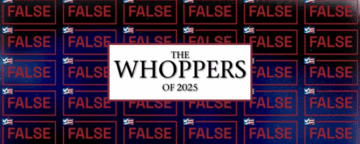Scientists can minimize the likelihood that their message will be rejected in a politically polarized environment by avoiding advocacy, relying on trusted sources, and inviting the audience to understand the evidence that justifies the scientific conclusion, according to a new study by Annenberg Public Policy Center researchers.
Because people have a tendency to defend their existing beliefs, scholars have questioned whether scientific findings that challenge those beliefs can be communicated in a world in which partisan media selectively feature scientific evidence.
“The study establishes that partisans can learn scientific information in a polarized environment if they are given the chance to understand how the conclusions are arrived at and they are offered information from a credible source,” said Kathleen Hall Jamieson, lead author of the study and the director of the Annenberg Public Policy Center (APPC) of the University of Pennsylvania.
Published in the Proceedings of the National Academy of Sciences (PNAS) on Sept. 16, the study, “Leveraging scientific credibility about Arctic sea ice trends in a polarized political environment,” involved responses from 465 self-identified conservatives. (The study focuses on that group out of an overall sample of 958 online participants.) Most of them were exposed to a FoxNews.com headline and pictures featuring a one-year increase in the extent of Arctic sea ice, but not its downward trend since satellite imaging began capturing the extent of sea ice in 1979.
The 2013 FoxNews.com article highlighted the change from 2012 to 2013 in NASA satellite images accompanied by the headline “Arctic sea ice up 60 percent in 2013.”
The study sought to see whether it was possible to overcome the effects of exposure to this content, whose power was enhanced by people’s natural tendency to be overly influenced by the last point in a trend line. The study did so by providing data that invited the inference that, despite this 2012-2013 change, the trend in Arctic sea ice was and was likely to continue to be downward.
The study participants were randomly assigned to one of three groups. One (174 people) was shown the satellite images and the accompanying FoxNews.com headline as well as a caption about a “whopping 60 percent increase” in ice. The second (148 people) was exposed to that information plus an animated graphic that charted data from NASA and Defense Department satellites showing the year-by-year Arctic sea ice changes from 1979-2013, with a trend line superimposed. The second group also was shown information about NASA and an illustrative analogy.
The goal was to inform those in the second group about the evidence of a downward trend in Arctic sea ice extent from 1979 to 2013. (The study calls this technique LIVA: leveraging-involving-visualizing-analogizing.) The analogy, attributed to a NASA scientist, posited that expecting the sea ice to return to its 1979 level based on the improvement seen in 2013 is like taking a series of exams and earning a C on the first, a D on the second, an F on the third, and D on the fourth – and as a result of the recent D, expecting an A on the final exam.
To read the complete news release, click here. To read the study in PNAS, click here.


